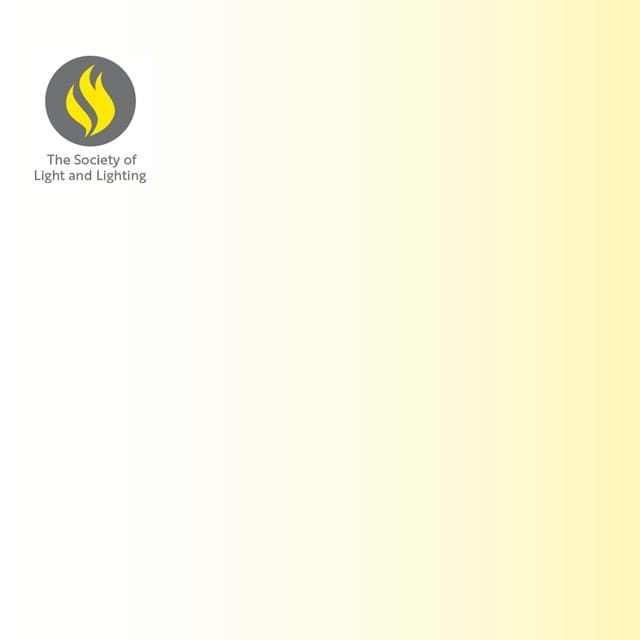
Lighting Guide 12 Emergency lighting has been written not only for use when design work is to be undertaken but also to assist engineers in evaluating existing premises against current standards and requirements of legislation.
In the United Kingdom, nearly all premises need to be risk assessed with an Emergency Lighting Risk Assessment developed so that the emergency lighting system compensates for risks to occupants in the event of failure of the normal lighting electrical supply for the particular project circumstances.
This Lighting Guide gives information on how to comply with the relevant standards and produce documentation so that the operator of the building can demonstrate compliance with safety legislation.
Emergency lighting is not a complex lighting design problem, but it is a difficult design management problem. Premises must be compliant to the latest emergency lighting requirements throughout their occupied life.
Design duties include: to gather information, coordinate, inform/educate and manage the design team and installer to provide the responsible person (client) with a compliant emergency lighting system which is optimal to the needs of the client and is a fully functional life safety system for the use of the premises.
For many years there has been confusion with multiple definitions of emergency lighting terms and the introduction of slang terms that could have multiple meanings, this guide is taking the standpoint that it is the British Standards Institution’s role to define the terminology that all emergency lighting practitioners should use.
As emergency lighting is a life safety system, it is vital that clear and unambiguous terminology is used for all life safety systems. It should be noted that in this version of the guide the definitions defined by the BSI have been used throughout.
The guidance in this document is written primarily for buildings located within the United Kingdom but not internationally. It should be noted that there are minor variations for Northern Ireland and Scotland. However, the principles for emergency lighting are universal and can be applied to other locations if the appropriate local conditions, standards and regulations are respected. The document was written by a committee of the Society of Light and Lighting.
1 Introduction
1.1 Aims of this guide
1.2 Scope of emergency lighting
1.3 Design approach to emergency lighting
1.4 Project size/type
2 Legislation and standards
2.1 Requirements
2.2 The responsible person
2.3 Competence of emergency lighting practitioners
2.4 Who inspects premises under fire safety legislation?
2.5 Life of a risk assessment
2.6 Implications of the risk assessment on the suitability of an emergency lighting system
3 Lighting requirements
3.1 Criteria
3.2 Positioning of emergency luminaires
3.3 Requirements of escape lighting
3.4 Emergency safety lighting
3.5 Standby lighting
3.6 Special premises
4 Design objectives
4.1 Philosophy
4.2 Design responsibility
5 Design calculations
5.1 Spacing tables
5.2 Manual design calculations
5.3 Service correction factors
5.4 Maintenance factors
5.5 Computer-based calculations
6 Equipment and systems
6.1 System types
6.2 Luminaire types
6.3 Luminaire types by application
6.4 Open areas (anti-panic)
6.5 Firefighting and safety equipment
6.6 Luminaire classification system
6.7 Lamp types
6.8 Gas lighting
6.9 Low-mounted way guidance systems
6.10 Power sources
6.11 Safety signs 62
6.12 Automatic testing/monitoring systems and remote testing systems
6.13 The economics of emergency lighting
7 Design planning
7.1 Input from third parties
7.2 Using the RIBA Plan of Work to manage the design process
8 Provision of power to emergency lighting systems
8.1 General
8.2 Design process
8.3 Alternative power supplies
8.4 Circuit protection
8.5 Cable types
8.6 Circuit monitoring
9 Installation, testing and maintenance
9.1 Overview
9.2 Maintenance
9.3 Routine inspection and testing
10 Commissioning, certification and handover
10.1 General
10.2 Photometric commissioning
10.3 Completion certificate
10.4 Certification
11 Glossary
12 References and bibliography
12.1 References
12.2 Bibliography
A1 Case study 1: 6-storey office building
A1.1 Initial consultation (RIBA stage 2)
A1.2 Site survey
A1.3 Pre-tender enquiry documentation (RIBA stages 3 and 4)
A1.4 The tender period (RIBA stage 4)
A1.5 The installation period (RIBA stage 5)
A1.6 Examples of problems noted/corrected during pre-commissioning (RIBA stage 6)
A2 Case study 2: Heritage building
Society of Light and Lighting Committee for LG12:
David Mooney (Atkins) (chair); Kristina Allison (Atkins); John Fitzpatrick; Stewart Langdown (Zencontrol); Iain Macrae (Iain Macrae Ltd.); Sophie Parry (Zumtobel Group AG); Simon Robinson (WSP); Paul Ruffles (Lighting Design and Technology); Peter Thorns (Zumtobel Group AG)